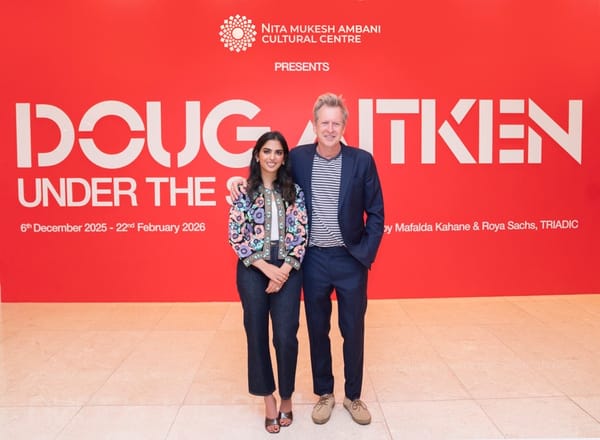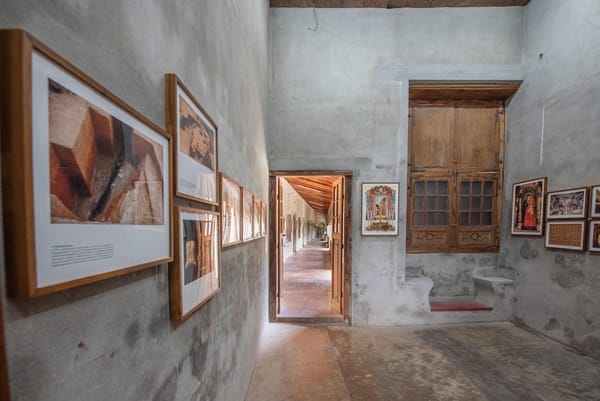How to Foster Creativity in Art Students
Encouraging creativity in art students requires cultivating curiosity, embracing experimentation, and creating a supportive environment where mistakes are seen as learning opportunities. By nurturing individual expression, students develop the confidence to explore their unique artistic voices.

Creativity is the beating heart of art, and nurturing it in students is essential for helping them develop as artists. But fostering creativity is no straightforward task. Creativity requires a blend of guidance, encouragement, and freedom to explore. In an era where educational systems often prioritize standardized results, art educators must work even harder to cultivate creativity, which doesn’t thrive in rigid frameworks. This article explores practical and effective ways for educators to foster creativity in art students, from embracing experimentation to creating a supportive environment and guiding students toward finding their unique artistic voices.
1. Encourage Curiosity and Inquiry
Creativity begins with curiosity. The more questions students ask about the world, the more they can discover and bring into their art. As educators, one of the best ways to inspire creativity is by fostering a classroom environment where curiosity is celebrated. Teachers can encourage students to look deeper at the world around them, helping them to ask questions about what they see, feel, and think.
Practical ways to nurture curiosity include:
- Prompting open-ended questions: When students present their work, ask them questions that encourage reflection, such as, “What inspired you to choose these colors?” or “What story do you want your work to tell?” Such questions help students think critically and go beyond simply explaining their choices.
- Exploring diverse sources of inspiration: Introduce students to a broad range of art forms, including sculpture, photography, performance art, and installations. Encourage them to draw inspiration from literature, music, history, or science, as interdisciplinary inspiration can spark new ideas and break creative boundaries.
By fostering curiosity and an inquiring mind, educators help students learn to view the world as a constant source of inspiration, which can be translated into unique creative expressions.
2. Embrace Experimentation and Risk-Taking
Creativity flourishes when students feel free to experiment without fear of judgment or failure. By allowing students to step outside their comfort zones, educators create an environment where students feel empowered to take risks. Art is an iterative process that often involves trial and error; some of the best works are born from experimentation.
Encouraging experimentation might involve:
- Providing diverse materials and mediums: Give students access to a wide range of art supplies, from paint and charcoal to unconventional materials like fabric, clay, or even found objects. Allowing them to try different mediums helps students discover new ways to express their ideas and challenges them to think creatively about how to achieve their artistic goals.
- Using experimental techniques: Consider integrating workshops focused on techniques like collage, printmaking, mixed media, and digital art. Such workshops encourage students to combine skills in innovative ways, breaking traditional boundaries and exploring how various materials can interact.
- Reinforcing that failure is part of learning: Emphasize the value of “failing forward.” Encourage students to view mistakes as learning opportunities that can lead to unexpected discoveries. This reframing helps students understand that failure is not the end but a step toward growth.
By encouraging experimentation, teachers can help students realize that creativity involves risk and that innovative ideas often arise when they step outside of what feels safe or predictable.
3. Cultivate an Environment of Openness and Acceptance
Creativity requires a safe, supportive environment. Students need to feel that their ideas and perspectives are valued, and that their artistic identity, however unconventional, is respected. When students know they can freely express themselves without fear of criticism, they become more willing to explore and push boundaries in their work.
To build an open environment:
- Encourage peer support: Foster a classroom culture where students offer constructive feedback to one another. For example, during group critiques, encourage students to use positive language when discussing each other’s work and to share insights about what they found interesting or thought-provoking.
- Model acceptance as a teacher: Teachers should openly accept different artistic styles and perspectives, setting an example of respect and open-mindedness. Avoid comparing students to each other or holding one style up as “correct.” Instead, encourage students to explore their unique styles and appreciate the diversity in the room.
- Use individual encouragement: Acknowledge each student’s strengths and unique contributions. When a student experiments with something new, such as using an unconventional color palette or taking an abstract approach, celebrate their effort and innovation.
Creating an atmosphere of openness allows students to develop their artistic voices without feeling pressured to conform. By fostering acceptance, teachers make it clear that every student’s perspective has value, helping them grow as confident, self-assured artists.
4. Encourage Exploration of Personal Identity and Experience
Art is deeply personal, and some of the most meaningful creativity comes from exploring one’s own identity, memories, and experiences. Helping students connect their art with their personal lives can add depth and authenticity to their work, making their creative processes more meaningful.
To encourage students to explore personal themes, educators can:
- Provide prompts related to self-reflection: Instead of asking students to simply replicate a style or technique, give them prompts that encourage introspection. For example, ask them to create a piece representing an important memory, a cultural heritage, or a place that holds personal significance.
- Use contemporary examples: Introduce students to contemporary artists who explore identity and personal experience in their work. Artists like Frida Kahlo, Jean-Michel Basquiat, or Kara Walker offer examples of how personal experience can fuel creative expression. Seeing others tackle these themes can inspire students to connect their own lives with their art.
- Allow for creative storytelling: Give students opportunities to incorporate narrative into their artwork. This could involve combining visual art with text, or encouraging students to develop a series that tells a story or conveys a journey. Storytelling can provide a powerful outlet for self-expression and help students see art as a medium for sharing their experiences.
Encouraging students to bring their identities into their work not only deepens their engagement but also helps them understand how art can be a tool for exploring and expressing who they are.
5. Integrate Collaboration and Group Projects
Art is often seen as a solitary endeavor, but collaboration can be a powerful way to inspire creativity. Working with others exposes students to new ideas, techniques, and perspectives, broadening their understanding of what’s possible.
Ways to incorporate collaboration include:
- Group projects: Assign projects that require students to work together to create a cohesive piece. For instance, students could collaborate on a mural, each contributing their own section while considering how it fits into the whole. This can help students learn to balance individual expression with collective creativity.
- Pairing students with complementary strengths: Try pairing students with differing skill sets. For example, a student with a talent for drawing could team up with a peer who excels in digital art. This allows them to learn from each other, share skills, and develop a creative synergy.
- Encouraging group critiques: Group critiques allow students to see their peers’ creative processes and gain fresh perspectives on their own work. By offering feedback and hearing other points of view, students can be inspired to take their work in new directions.
Collaboration teaches students that art doesn’t have to be an isolated activity and shows them how working with others can lead to innovative outcomes. It builds interpersonal skills and a sense of camaraderie that enhances their overall creativity.
6. Teach the Value of Reflection
Reflection is an essential component of creativity that often goes overlooked. Encouraging students to think critically about their own work and creative processes helps them learn from their experiences and develop a deeper understanding of their artistic journeys.
To promote reflection:
- Incorporate self-assessment: After completing a project, ask students to write about what they enjoyed, what they found challenging, and what they might do differently next time. This helps them build self-awareness and recognize their strengths and areas for growth.
- Encourage journaling: Encourage students to keep an art journal where they can sketch ideas, jot down inspiration, and record thoughts about their creative processes. This not only fosters reflection but also provides a space for brainstorming and experimenting without judgment.
- Discuss the creative process in group settings: When students share their work, ask them to explain their process—what inspired them, what techniques they used, and how their piece evolved. Discussing the process can be as valuable as discussing the final product, helping students see art as a journey rather than just an endpoint.
Reflection builds resilience and self-confidence, reminding students that creativity is a continuous, evolving process. It also empowers them to take ownership of their growth as artists.
7. Empower Students to Find Their Unique Artistic Voices
Ultimately, creativity in art is about finding one’s own voice. It’s crucial for educators to support students in developing a style that feels authentic and meaningful to them. Helping students discover their unique perspectives encourages them to see art as a means of self-expression rather than a set of technical skills to master.
Educators can help students find their artistic voices by:
- Encouraging personal experimentation: Give students room to explore without too much structure. Allowing them to experiment and find what resonates helps them develop a style that reflects their individuality.
- Providing opportunities for independent projects: Assigning open-ended projects where students can choose their subject matter, medium, and approach gives them a chance to explore themes and styles that matter to them personally.
- Affirming individual styles: Instead of steering students toward a specific style or technique, celebrate each student’s unique approach. Highlight the diversity of perspectives and remind students that there’s no “right” way to create.
Helping students find their voices is the most enduring way to foster creativity, allowing them to develop as artists who are confident in their own identities.
Conclusion
Fostering creativity in art students requires more than teaching technique—it involves nurturing an environment of curiosity, openness, and encouragement. By guiding students to explore their identities, take creative risks, collaborate with others, and reflect on their work, educators help them discover the boundless possibilities of art. As students develop their unique voices, they gain the confidence to express themselves freely, transforming their creativity into a lifelong tool for exploration and self-discovery.





